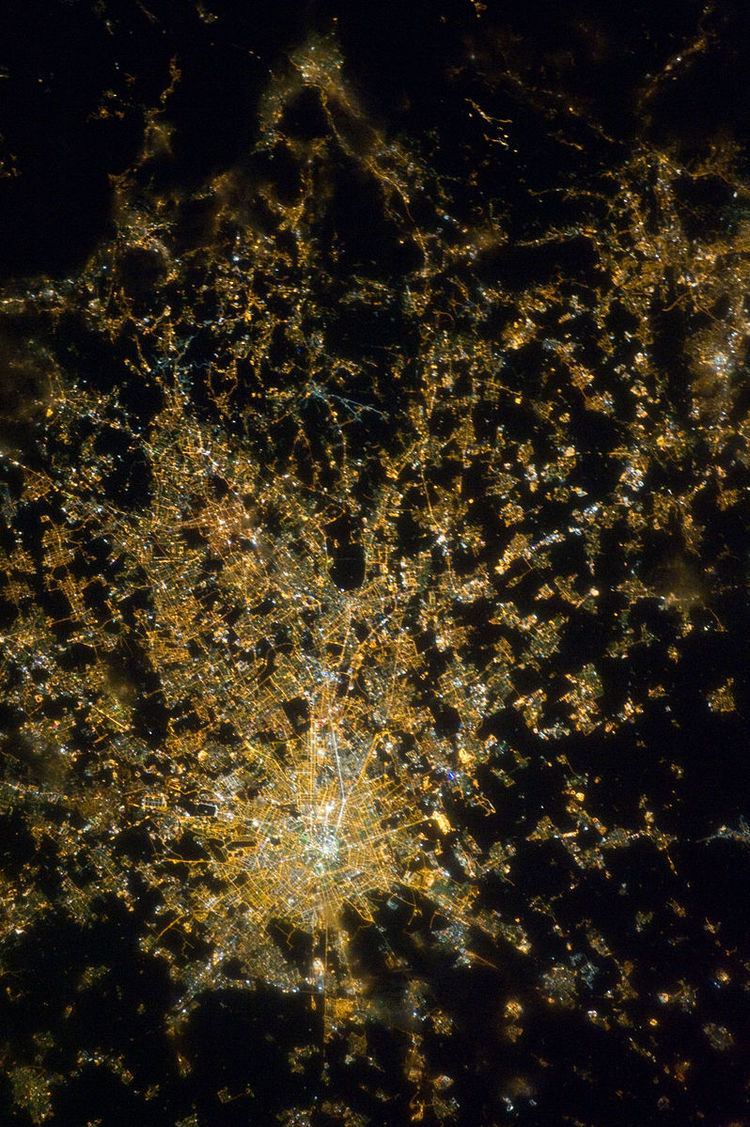 | ||
The Milan metropolitan area, known as Grande Milano ("Greater Milan"), is the metropolitan area of the Metropolitan City of Milan, Italy.
Contents
The spatial spread of the Milan metropolitan area has greatly accelerated over recent decades. Since the 1960s, the growth of the numerous settlements around the core of the city has defined the extent and patterns of the metropolitan area, and commuting flows suggest that socioeconomic linkages have expanded even beyond the boundaries of the Province of Milan. A single, large and increasingly widespread conurbation with the city of Milan at its hub defines the metropolitan area; however, its extent can vary greatly depending on the defining source. The Milan metropolitan area contains a population of 8,123,020 in 2013 ISTAT.
The Milan metropolitan area is part of the so-called Blue Banana, the area of Europe with the highest population and industrial density.
The metropolitan area is strictly statistical and does not imply any kind of administrative unity or function.
Definitions
One definition of the metropolitan area is the local labour market system, an official definition based on commuting patterns used by Istat, consisting of 115 municipalities (comuni) with a total population of 2,975,754 (2001).
Another definition is synonymous with the province of Milan, with 3,869,037 inhabitants distributed over an area of 1,982 km2 (765 sq mi).
According to Eurostat Urban Audit program, the larger urban zone of Milan has a population of 3,076,643.
Finally, an Organisation for Economic Co-operation and Development (OECD) territorial review of 2006 takes a more inclusive definition based on socioeconomic patterns. They define the Milan metropolitan area as the Lombard provinces of Milan, Bergamo, Como, Lecco, Lodi, Monza and Brianza, Pavia, Varese,the Piedmontese Province of Novara and Province of Alessandria and the Emilian Province of Piacenza. The overall population under this definition is about 7,400,000, dispersed over an area of about 12,000 km2 (4,600 sq mi).
Composition of Milan Urban Area
The Milan urban area includes the Metropolitan City of Milan (which replaced the former Province of Milan in 2015) and the province of Monza e Brianza, 49 municipalities in the province of Varese, 43 municipalities in the province of Como and 45 municipalities in the province of Lecco, in all 248 municipalities. The most important of these by population are Monza, Busto Arsizio, Sesto San Giovanni, Legnano and Gallarate as shown in the next table.
The total land area of the greater urban area is 2944.53 km² with a population of 5.246.000 the largest in Italy by population. 27% of this population resides in the city of Milan (1,307,495). The density of the Milan urban area is 1,651 per km², one of the highest in Europe.
Comparison
This table shows the main Italian urban areas by population. The Milan urban area is the largest
